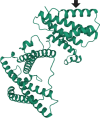Experimental evolution of the megaplasmid pMPPla107 in Pseudomonas stutzeri enables identification of genes contributing to sensitivity to an inhibitory agent
- PMID: 34839711
- PMCID: PMC8628073
- DOI: 10.1098/rstb.2020.0474
Experimental evolution of the megaplasmid pMPPla107 in Pseudomonas stutzeri enables identification of genes contributing to sensitivity to an inhibitory agent
Abstract
Horizontally transferred elements, such as plasmids, can burden host cells with various metabolic and fitness costs and may lead to other potentially detrimental phenotypic effects. Acquisition of the Pseudomonas syringae megaplasmid pMPPla107 by various Pseudomonads causes sensitivity to a growth-inhibiting substance that is produced in cultures by Pseudomonads during growth under standard laboratory conditions. After approximately 500 generations of laboratory passage of Pseudomonas stutzeri populations containing pMPPla107, strains from two out of six independent passage lines displayed resistance to this inhibitory agent. Resistance was transferable and is, therefore, associated with mutations occurring on pMPPla107. Resequencing experiments demonstrated that resistance is likely due to a large deletion on the megaplasmid in one line, and to a nonsynonymous change in an uncharacterized megaplasmid locus in the other strain. We further used allele exchange experiments to confirm that resistance is due to this single amino acid change in a previously uncharacterized megaplasmid protein, which we name SkaA. These results provide further evidence that costs and phenotypic changes associated with horizontal gene transfer can be compensated through single mutational events and emphasize the power of experimental evolution and resequencing to better understand the genetic basis of evolved phenotypes. This article is part of the theme issue 'The secret lives of microbial mobile genetic elements'.
Keywords: bacteriostatic; experimental evolution; megaplasmid.
Figures





Similar articles
-
Bigger is not always better: transmission and fitness burden of ∼1MB Pseudomonas syringae megaplasmid pMPPla107.Plasmid. 2014 May;73:16-25. doi: 10.1016/j.plasmid.2014.04.002. Epub 2014 May 2. Plasmid. 2014. PMID: 24792221
-
Genomic Background Governs Opposing Responses to Nalidixic Acid upon Megaplasmid Acquisition in Pseudomonas.mSphere. 2021 Feb 17;6(1):e00008-21. doi: 10.1128/mSphere.00008-21. mSphere. 2021. PMID: 33597171 Free PMC article.
-
Just the Two of Us? A Family of Pseudomonas Megaplasmids Offers a Rare Glimpse into the Evolution of Large Mobile Elements.Genome Biol Evol. 2019 Apr 1;11(4):1192-1206. doi: 10.1093/gbe/evz066. Genome Biol Evol. 2019. PMID: 30918968 Free PMC article.
-
Multiple phenotypic changes associated with large-scale horizontal gene transfer.PLoS One. 2014 Jul 21;9(7):e102170. doi: 10.1371/journal.pone.0102170. eCollection 2014. PLoS One. 2014. PMID: 25048697 Free PMC article.
-
Why do plasmids manipulate the expression of bacterial phenotypes?Philos Trans R Soc Lond B Biol Sci. 2022 Jan 17;377(1842):20200461. doi: 10.1098/rstb.2020.0461. Epub 2021 Nov 29. Philos Trans R Soc Lond B Biol Sci. 2022. PMID: 34839708 Free PMC article. Review.
Cited by
-
Evolutionary rescue of bacterial populations by heterozygosity on multicopy plasmids.J Math Biol. 2025 Feb 6;90(3):26. doi: 10.1007/s00285-025-02182-4. J Math Biol. 2025. PMID: 39909926 Free PMC article.
-
A mathematician's guide to plasmids: an introduction to plasmid biology for modellers.Microbiology (Reading). 2023 Jul;169(7):001362. doi: 10.1099/mic.0.001362. Microbiology (Reading). 2023. PMID: 37505810 Free PMC article. Review.
-
Introduction: the secret lives of microbial mobile genetic elements.Philos Trans R Soc Lond B Biol Sci. 2022 Jan 17;377(1842):20200460. doi: 10.1098/rstb.2020.0460. Epub 2021 Nov 29. Philos Trans R Soc Lond B Biol Sci. 2022. PMID: 34839706 Free PMC article. No abstract available.
References
Publication types
MeSH terms
Associated data
LinkOut - more resources
Full Text Sources

